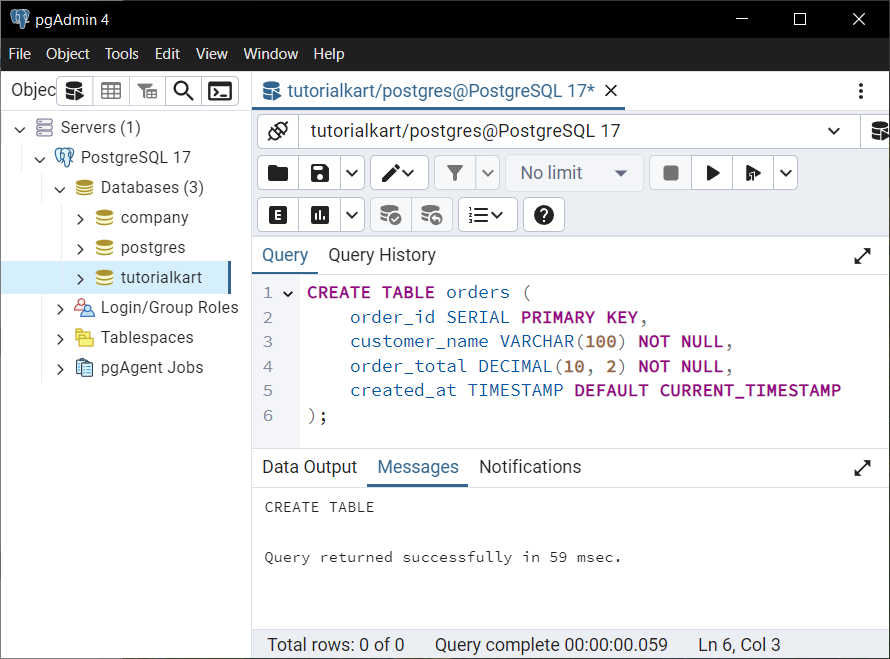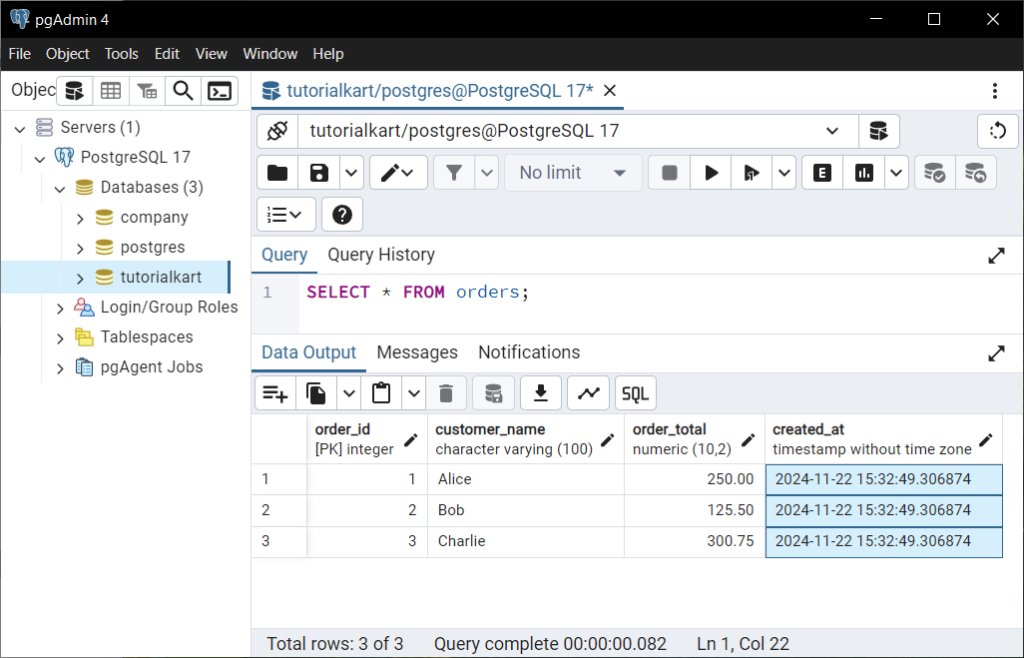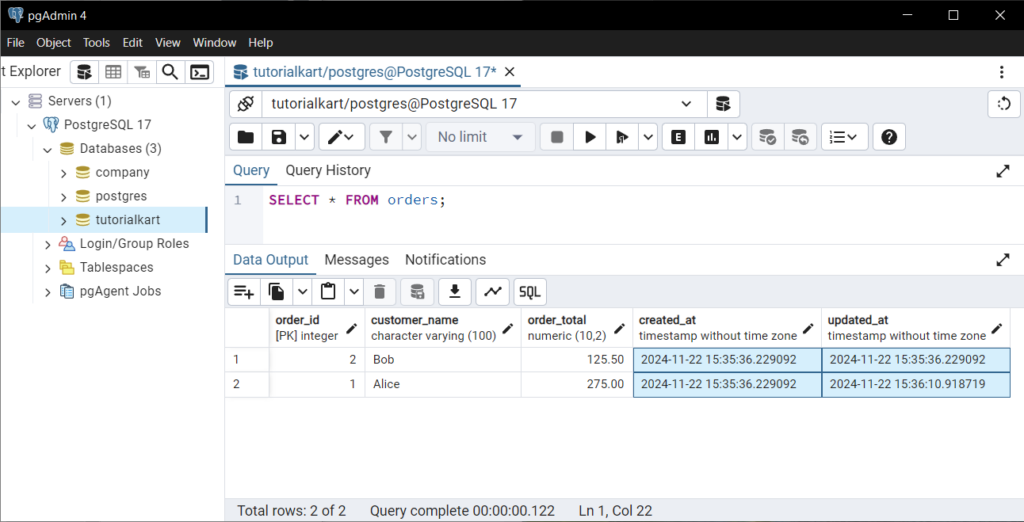Create Table with Default Timestamp in PostgreSQL Database
In PostgreSQL, the TIMESTAMP data type is used to store both date and time values. It’s common to set a default timestamp value for a column, such as the current time when a record is created. This feature is particularly useful for tracking when records are added or updated in a table.
In this tutorial, we will learn how to create tables with a default timestamp column and demonstrates various use cases with examples.
Basic Syntax
The general syntax for creating a table with a TIMESTAMP column and a default value is:
CREATE TABLE table_name (
column_name TIMESTAMP DEFAULT CURRENT_TIMESTAMP
);The CURRENT_TIMESTAMP function provides the current date and time when a row is inserted into the table. You can also use NOW() as an alternative to CURRENT_TIMESTAMP.
Example 1: Create a Table with Default Timestamp
Let’s create a table named orders to track customer orders. The table includes a created_at column that defaults to the current timestamp.
CREATE TABLE orders (
order_id SERIAL PRIMARY KEY,
customer_name VARCHAR(100) NOT NULL,
order_total DECIMAL(10, 2) NOT NULL,
created_at TIMESTAMP DEFAULT CURRENT_TIMESTAMP
);
Insert sample data into the table, without specifying the created_at column:
INSERT INTO orders (customer_name, order_total)
VALUES
('Alice', 250.00),
('Bob', 125.50),
('Charlie', 300.75);
Query the table to view the data:
SELECT * FROM orders;
Explanation: The created_at column automatically populates with the current timestamp when a row is inserted, making it easy to track when the order was created.
Example 2: Adding a Default Timestamp for Updates
You can also use a TIMESTAMP column to track the last update time for a row. In this case, you can pair CURRENT_TIMESTAMP with the ON UPDATE clause to automatically update the column whenever the row is modified.
Let’s modify the orders table to include an updated_at column:
DROP TABLE IF EXISTS orders;
CREATE TABLE orders (
order_id SERIAL PRIMARY KEY,
customer_name VARCHAR(100) NOT NULL,
order_total DECIMAL(10, 2) NOT NULL,
created_at TIMESTAMP DEFAULT CURRENT_TIMESTAMP,
updated_at TIMESTAMP DEFAULT CURRENT_TIMESTAMP
);
Create a trigger function to update the updated_at column automatically:
CREATE OR REPLACE FUNCTION update_timestamp()
RETURNS TRIGGER AS $$
BEGIN
NEW.updated_at = CURRENT_TIMESTAMP;
RETURN NEW;
END;
$$ LANGUAGE plpgsql;
Add a trigger to the orders table:
CREATE TRIGGER set_updated_at
BEFORE UPDATE ON orders
FOR EACH ROW
EXECUTE FUNCTION update_timestamp();
Insert sample data:
INSERT INTO orders (customer_name, order_total)
VALUES
('Alice', 250.00),
('Bob', 125.50);
Update an order and observe the behavior of the updated_at column:
UPDATE orders
SET order_total = 275.00
WHERE customer_name = 'Alice';
Query the table to view the changes:
SELECT * FROM orders;
Explanation: The updated_at column is automatically updated with the current timestamp whenever a row is modified, while the created_at column remains unchanged.
Conclusion
The TIMESTAMP data type in PostgreSQL is an excellent tool for tracking when records are created or updated. By using default values such as CURRENT_TIMESTAMP, you can automate these processes and maintain accurate metadata. The additional functionality of triggers enables you to handle updates dynamically.
